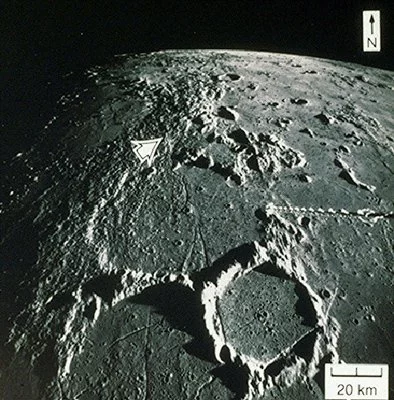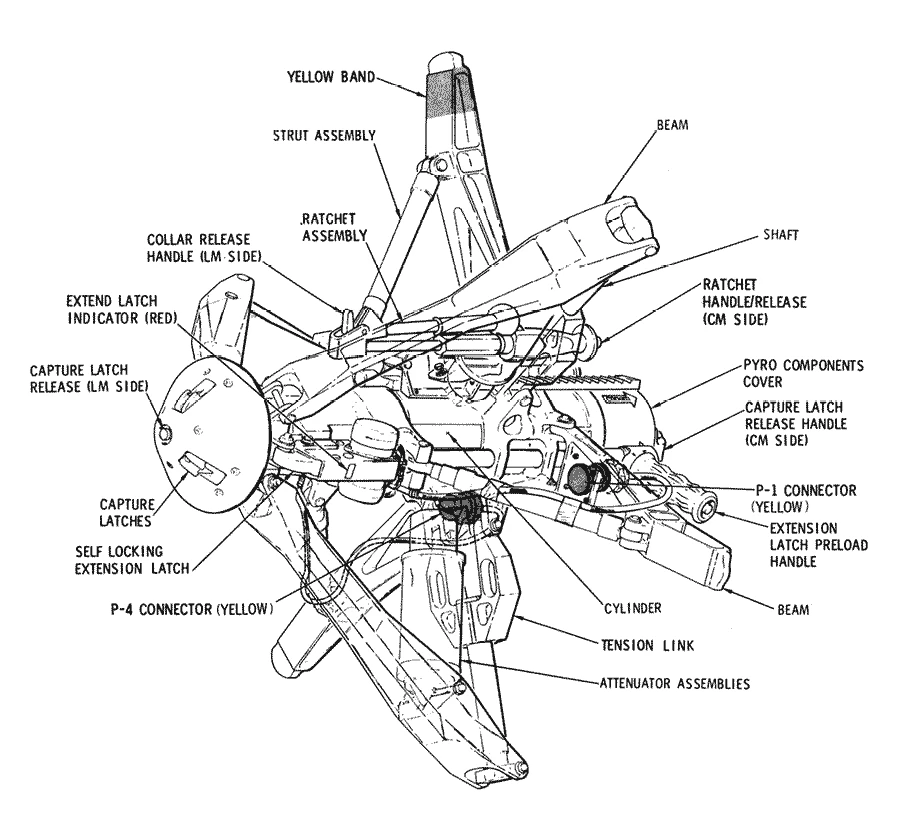Fifty years ago today, on January 31, 1971, at 4:03 pm EST, a Saturn V rocket lifted off from Pad A of Launch Complex 39 at the Kennedy Space Center carrying Apollo 14 – the Moon mission that would make or break the US space program.
If Apollo 14 is remembered at all by most people, it's mainly as the answer to trivia questions like, who was the oldest man to walk on the Moon, or what is the longest lunar golf drive? But it was far more than that. Arguably, it was one of the most important of all the Apollo lunar landing missions, with the possible exception of Apollo 11.
This is because Apollo 14 was the follow-on mission from the ill-fated Apollo 13, which suffered an oxygen tank explosion on the way to the Moon that crippled the Command Service Module (CSM) and forced the three astronauts aboard to use the Lunar Module (LM) as a lifeboat as they struggled to return to Earth.

It was a heroic episode that showed the value of courage, innovation, and training, but it also almost killed the Apollo program, which was already faced with an indifferent public and a hostile congress that would rather spend the NASA budget elsewhere. This put a lot of pressure on the space agency and the crew of Apollo 14. If it failed, if it was forced to turn back, it would almost certainly have been the last American Moon landing for the foreseeable future.
Apollo 14 was originally scheduled to fly in 1970 as part of NASA's plan to make two Moon landings per year. Not surprisingly, the Apollo 13 accident delayed this until 1971 because of the inevitable investigation, the need to modify the CSM to avoid a replay, and the retraining of the next crew, who had to take over 13's mission objectives to explore the Fra Mauro region in the lunar highlands.The first American in space returns
The mission was also remarkable because its Commander, Captain Alan Bartlett Shepard Jr (USN), was one of the original Mercury Seven astronauts chosen in 1959. He became America's first man in space on May 5, 1961, when he was launched into a suborbital trajectory atop a Redstone rocket on the Mercury 3 mission. Unfortunately, Shepard was grounded not long after due to an ear disorder called Ménière's disease. Now, 10 years later, after experimental surgery, he was cleared for flight again and was returning to space at the age of 47 to become the oldest person to have set foot on the Moon.

Shepard was joined by Command Module Pilot, Major Stuart Roosa (USAF), and Lunar Module pilot, Commander Edgar Dean Mitchell (USN). Both were rookie astronauts on their first space missions.
Because of the modifications to the spacecraft and the need to take over Apollo 13's objectives, the Apollo 14 crew trained for 19 months, longer than any other Apollo crew, and had an extra workload because they had to oversee the engineering work on the CSM Kitty Hawk. These included modified oxygen tanks, an additional tank away from the first two, an auxiliary battery, and hardened electrics. Structural changes were also made to the LM Antares to allow it to carry more equipment.Trouble in orbit
"We realized that if our mission failed, if we had to turn back, that was probably the end of the Apollo program," Mitchell would later say. "There was no way NASA could stand two failures in a row. We figured there was a heavy mantle on our shoulders to make sure we got it right."

On the day of the launch, things didn't look promising. A cold front was moving in on Kennedy, threatening rain and lightning. This resulted in a hold of 40 minutes at the T Minus 8 minute mark while showers passed over.
While a crowd that included US Vice President Spiro T. Agnew and the future King Juan Carlos I of Spain looked on, the Saturn V rocket finally lifted off and the S-IVB third stage carrying Kitty Hawk and Antares went into orbit.
It was shortly after this that the Apollo program almost came to a premature end. Three hours into the mission, Kitty Hawk separated from the booster and turned to dock with Antares. Roosa hoped to beat the record for the least propellant used for such a maneuver, but on contact the docking probe failed to engage with Antares. He made repeated attempts, but each one failed to lock as NASA engineers provided advice and asked questions.

This was very bad. If Kitty Hawk couldn't dock with Antares, the Moon landing would have to be abandoned. Finally, after two hours, Mission Control suggested trying a sixth time with the docking probe retracted. This time it engaged.
However, they weren't out of the woods yet. The probe was pulled inside the Command Module after docking and carefully examined. If it was faulty, the LM's Ascent Module might not be able to re-dock with Kitty Hawk, which meant no landing attempt. Fortunately, nothing was found to be wrong with the probe and the mission was given the Go for continuing.
After 79 hours and 28 minutes of coasting, Apollo 14 went into lunar orbit. In order to save fuel aboard the Lunar Module, Kitty Hawk lowered the altitude before Shepard and Mitchell, in the Antares, separated from the CSM.False Abort
It was at this point that the mission was almost scrubbed for a second time. Due to a small drop of solder coming loose, the Abort switch on the Lunar Module's control panel kept short-circuiting even though the switch hadn't been touched. This was a real problem because each time the switch shorted it sent a false Abort signal to the onboard computer. If this happened when the descent engine was firing, it would cause the Ascent Module to automatically separate and fire its engine, sending the astronauts back into lunar orbit.
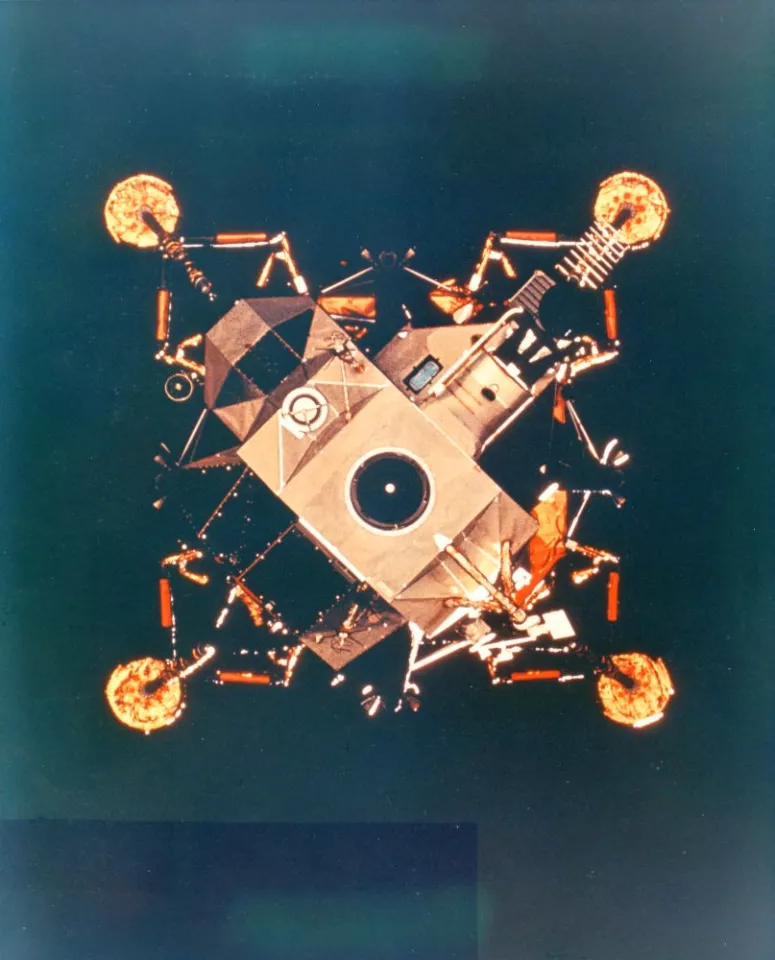
Today, that wouldn't be too much of a problem, but the flight computer used on Apollo 14 had its software hardwired in. To alter its programming required dismantling and rewiring the computer. This wasn't possible, so NASA and MIT came up with a solution that involved telling the computer via the input keypad that the Abort sequence had already been carried out. This meant that any new Abort signals would be ignored. It also meant that in a real emergency the Abort sequence would have to be carried out manually, but at least the landing could proceed.
Or so it seemed. During the actual powered descent, the spacecraft's landing radar wouldn't lock onto the Moon's surface and the navigation computer was effectively flying blind. This was solved by the tried and true method of turning the radar off and on, and it locked on at 22,000 feet (6,700 m). If they had been below 10,000 feet (3,000 m), they would have had to decide between an abort and making a manual landing.
As it happened, Antares touched down on the Moon on February 5, at 4:18 am EST, in the Fra Mauro region (3.64530°S, 17.47136°W) in the most accurate landing of the entire Apollo program.Golf on the Moon
The first of two ExtraVehicular Activities (EVAs) began at 9:42 am EST. During the 4 hours and 47 minutes that Shepard and Mitchell spent outside, they set up the television camera, deployed the communications antenna, collected samples, took photographs, and laid out the atomic-powered Apollo Lunar Surface Experiments Package (ALSEP). This set of instruments, which was designed to operate for a full year, included a mortar that fired 21 grenades by remote control, which would allow scientists to take seismographic readings on command over the coming weeks.
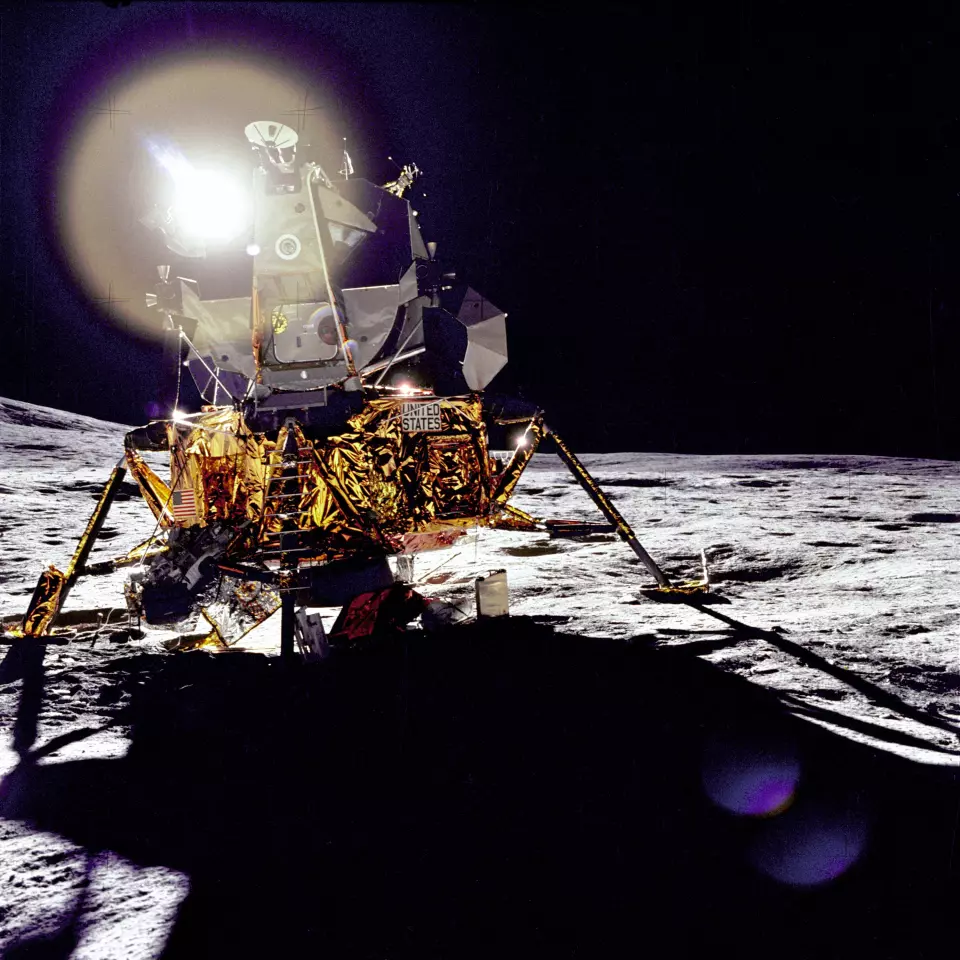
After returning to Antares for food and rest, the astronauts began their second and final EVA. This 4 hour and 34 minute trek was much more ambitious as Shepard and Mitchell set out to climb a formation called Cone crater, pulling their gear in a folding cart called the Modular Equipment Transporter (MET). The ground turned out to be much more rugged than expected and the two kept losing their bearings. They soon became exhausted and, fearing that their oxygen might be running low, Mission Control ordered their return even though later photograph evidence showed that they came within 65 feet (20 m) of their objective.
Before reentering Antares, Shepard made sporting history by dropping a pair of golf balls on the lunar regolith, attaching the head of a 6-iron to the shaft of a sample collecting tool, and taking three swings with one hand. The third swing sent one of the balls shooting 50 feet (15 m), setting a new lunar record. Of course, the record he broke was the one he'd set a few seconds before with the other ball.
Not to be left out, Mitchell took another tool handle and threw it like a javelin, which flew slightly farther than Shepard's ball.

Meanwhile, Roosa remained in orbit, photographing future landing sites and conducting scientific experiments. In addition, he brought along several hundred seeds that later germinated and were distributed back on Earth as "Moon trees."Return to Earth
On February 6, 1971 at 1:48 pm EST (18:48 GMT), Antares's Ascent Stage lifted off from the Moon and rendezvoused with Kitty Hawk after only a single orbit, cutting two hours off the trip – another first for the mission. After Shepard and Mitchell transferred to the CSM with their 94.4 pounds (42.8 kg) of Moon rocks, Antares was undocked and ordered to fire its thrusters by remote control, sending it on a collision course with the lunar surface.
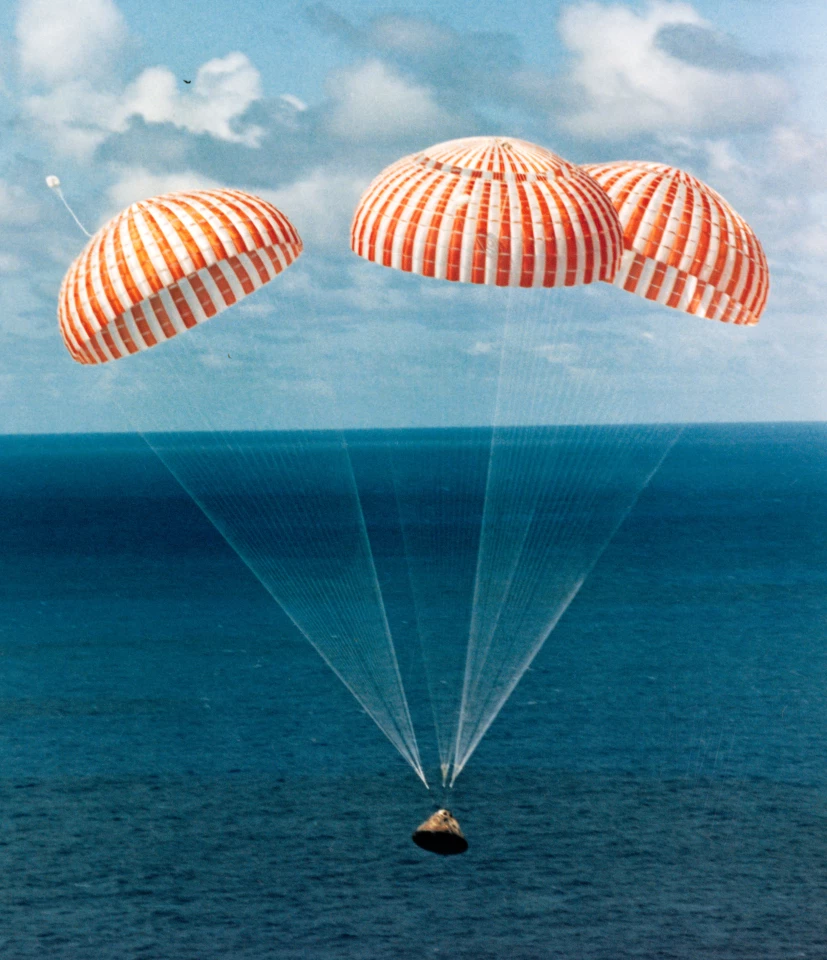
Nine days, 1 minute, and 58 seconds after leaving Cape Kennedy, Apollo 14 splashed down in the Pacific Ocean on February 9, 1971, at 4:05 pm EST before being recovered by the cruiser USS New Orleans. Wearing respirators to protect against any lunar microbes, the three men were transferred to a mobile quarantine facility for the flight to Houston.
The Apollo program was going forward again, and the way was open for Apollo 15 and the first car to drive on another world.














